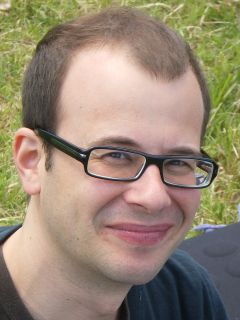Invited Talk by Dr. Alessio Del Bue

|
Dr. Alessio Del Bue
PAVIS, IIT
- Date: Thursday, October 12, 2017
- Time: 15:00 - 15:45
- Location: FMI 00.12.019 (MI Building, Campus Garching), Boltzmannstr. 3, Garching b. München
|
Talk Overview
Title:
Tomasi and Kanade revisited: from 3D point reconstruction to object based structure from motion.
Abstract:
In this talk I will present how semantic information as extracted by object and region detectors can be used to perform classical 3D Computer Vision tasks in a robust way. In particular, object positions can be used to simply calibrate cameras and to identify the position and orientation of objects in 3D. Strikingly, this
solution has a closed form that can be solved very efficiently, similarly to the standard Tomasi and Kanade factorization problem. Moreover, the information of the position of objects can be used to initialise standard methods for 3D reconstruction using feature point matches. This new approach provides a novel pipeline to efficiently
inject semantic information in Structure from Motion problems.
Biography:
Alessio Del Bue is a Researcher at the PAVIS (Pattern Analyisis and computer VISion) Department of the Istituto Italiano di Tecnologia (IIT) where he is leading the Visual Geometry and Modelling (VGM) Lab. Previously, he was a researcher in the Institute for Systems and Robotics at the Instituto Superior Técnico (IST) in Lisbon, Portugal. Before that, he obtained his Ph.D. under the supervision of Dr. Lourdes Agapito at Queen Mary University of London


